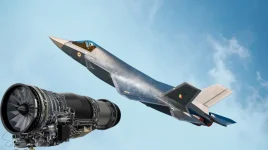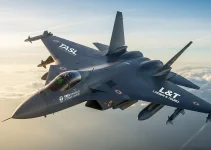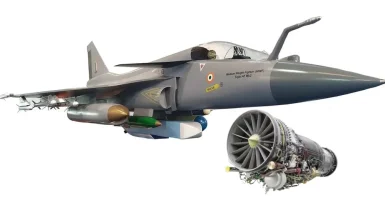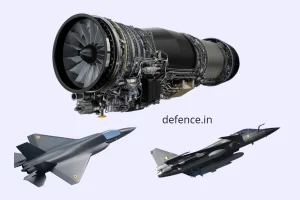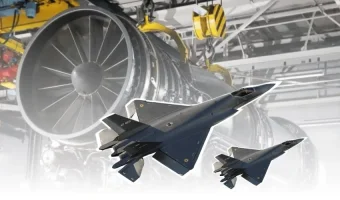- Views: 3K
- Replies: 21
Hindustan Aeronautics Limited (HAL) has formally begun its search for an engine to power the Hindustan Lead-in Fighter Trainer (HLFT-42). This next-generation supersonic trainer aircraft is crucial for preparing Indian Air Force pilots to operate advanced combat aircraft.
On March 17, 2025, HAL issued a Request for Information (RFI) to international engine manufacturers, outlining the need for an engine producing 95-100 kilonewtons (kN) of thrust and possessing a total technical lifespan of 6,000 hours. An RFI is a standard preliminary step to gather information from potential suppliers before making a procurement decision.
Currently, the General Electric F414 engine appears to be the primary contender. However, discussions around HAL's own 110kN engine, which is under development for the Advanced Medium Combat Aircraft (AMCA), introduce the possibility of using the same engine for both aircraft. Such a decision could significantly enhance the HLFT-42's effectiveness in training pilots specifically for the AMCA.
The HLFT-42, first displayed as a scale model at Aero India 2023, is designed to bridge the gap between basic flight trainers and sophisticated frontline fighter jets like the Tejas Mk2 and the upcoming AMCA. The aircraft is planned to have a maximum takeoff weight of 16.5 tons, achieve speeds up to Mach 1.8 (1.8 times the speed of sound), and operate at altitudes up to 60,000 feet.
It will feature advanced systems including Active Electronically Scanned Array (AESA) radar for superior target detection, Infrared Search and Track (IRST) for passively detecting heat signatures, and Fly-by-Wire (FBW) controls for enhanced maneuverability. These features will allow it to simulate the flying experience of 4.5- and 5th-generation fighter aircraft. Furthermore, with a payload capacity of 4.5 tons and 11 points for attaching weapons or pods, the HLFT-42 could also serve a secondary combat function, making it a versatile asset for India's air defence.
The specified thrust range of 95-100 kN in the RFI underscores the HLFT-42's need for a powerful engine. Unlike conventional trainers that often focus on stability and fuel economy, the HLFT-42 must be capable of high-performance maneuvers similar to those in actual combat, while still ensuring the safety and reliability essential for training. This requirement for a balanced performance profile makes the choice of engine particularly critical.
The General Electric F414 engine, which can produce up to 98 kN of thrust, closely matches HAL's stated needs. It is a well-established engine, already chosen for India's Tejas Mk2 fighter. This existing relationship offers benefits such as familiarity for technicians, an established supply network, and a thrust capability that fits the HLFT-42's requirements.
The F414 is also used in international aircraft like the American F/A-18E/F Super Hornet and South Korea’s KF-21 Boramae, highlighting its dependability in demanding roles. Selecting the F414 could simplify logistics and training for HAL, building on India’s existing infrastructure for the engine, which includes plans for local manufacturing following a June 2023 agreement with GE Aerospace.
However, selecting the F414 is not without potential drawbacks. While it meets the minimum thrust requirement, there are concerns it might not provide the surplus power needed for the HLFT-42’s comprehensive training goals, especially for simulating advanced capabilities of the AMCA, such as supercruise (sustained supersonic flight without afterburners) and high-altitude performance.
Additionally, the previous agreement for the Tejas Mk2’s F414 engines did not include a full transfer of intellectual property rights (IPR), as confirmed by HAL in May 2024. This limits India’s ability to independently modify or upgrade the engine, a restriction that could also apply if the F414 is chosen for the HLFT-42.
An alternative is the indigenous 110kN engine, which is set to be developed by India’s Gas Turbine Research Establishment (GTRE) with a foreign partner, potentially Safran from France or Rolls-Royce from the UK, for the AMCA program. This engine, designed specifically for India’s fifth-generation stealth fighter, is expected to deliver 75 kN of dry thrust (without afterburners) and over 110 kN of wet thrust (with afterburners).
It is being engineered for supercruise capability and effective operation in India's typically hot and humid climate. Although this engine is not expected to be ready until the mid-2030s, it presents an attractive option for the HLFT-42 by enabling engine commonality with the AMCA.
The AMCA is not planned to have a twin-seat trainer version, primarily due to its stealth design and the associated costs. Consequently, the Indian Air Force will depend on sophisticated simulators and advanced lead-in trainers like the HLFT-42 to prepare its pilots.
Equipping the HLFT-42 with the AMCA’s 110kN engine would allow trainee pilots to experience flight characteristics nearly identical to the AMCA, which is vital for mastering its advanced features like supercruise, stealth, and integrated sensor systems.
Using the same engine for both aircraft would also streamline maintenance, spare parts management, and overall logistics, offering a significant strategic benefit for a fleet intended to be in service until the 2060s.
Trainer aircraft often require more engine thrust than the combat jets they support. This is because they must safely handle low-speed flight for new pilots while also being capable of simulating high-performance combat scenarios for advanced trainees. The HLFT-42's role in mimicking fifth-generation fighters makes this need for higher thrust even more pronounced.
A 110kN engine could offer the necessary power margin to replicate AMCA-specific flight conditions, such as sustained supersonic flight without using afterburners. It would also provide scope for future upgrades, including potential integration with unmanned systems like the CATS Warrior drone.
Choosing the indigenous 110kN engine does involve risks. Its development schedule is considerably behind that of the HLFT-42, potentially delaying the trainer's introduction beyond the early 2030s.
In contrast, the F414 engine is readily available, which would allow HAL to proceed more quickly with a prototype using its own funds and components from the Tejas program, as is currently planned.
Cost is another important consideration; the advanced technology of the AMCA engine could lead to higher expenses, while the F414 benefits from an established production line, making it a more cost-effective option in the short term.

